
In the early 1990s François Castaing challenged a group of free-spirited Chrysler engineers to design and build a unique automobile for the vast number of people around the world who could afford nothing but a bicycle. This project became known internally as The China Car.
This book closely examines the challenges of producing plastic car bodywork, the difficulties of selling the car inside the company as well as outside to consumers, and the reasons why the project was unsuccessful and finally canceled. It also provides an unflinching look at how decisions were made at Chrysler.
Early on, the team discovered that molding large parts of the new vehicle in recycled plastic might be the only way to achieve their goal. Polyethylene Terephthalate or PET is the common plastic material most of our bottles are made of. PET is safe, reusable, and inexpensive, but as an example, we in the USA throw away 35 billion empty bottles every year to landfills, streets, parks, and waterways.
Despite overcoming technical hurdles thanks to the strong interpersonal relationships and problem solving between engineers and their suppliers, including the car s successful use of recycled, molded PET bodywork, the China Car never reached the market.

When a sickly, half-deaf, forty-seven-year-old retired U.S. Army Air Corps Captain went to China in 1937 to survey Chiang Kai-shek’s Chinese Air Force, little did the world know this would be the man to stem the Japanese tide in the Far East. Almost every military expert predicted his handful of pilots of the American Volunteer Group would not last three weeks. Yet in seven months in 1942, the AVG, fighting a rear-guard action over Burma, China, Thailand, and French Indonesia, destroyed a confirmed 199 planes, with another 153 “probables” as well. They did this losing only four pilots and twelve P-40s in air combat and sixty-one on the ground.
In this definitive biography of General Claire Chennault, veteran reporter Jack Samson offers a rare and fascinating inside look at this legendary man behind the Flying Tigers.
Unlike Eisenhower and MacArthur, Chennault was no saintly military leader. He was a chain-smoking, bourbon-drinking, womanizing man. He was the kind of leader his men knew could and did fly better than they–in any kind of plane. But first and last, he was a fighter–a tough, single-minded warrior who was never confused by who the enemy was in Asia, regardless of what the State Department thought.
Following Chennault from this command of the Fourteenth U.S. Army Air Force during World War II to the part of his life that is not well known–the intriguing postwar years in China and Formosa, where his Civilian Air Transport (CAT) became the scourge of the Red Chinese–The Flying Tiger is an extraordinary portrait of one of America’s great military commanders.

An account of Ferrari’s 15,000 Red Miles Tour
through China by two 612 Scagliettis
Published by Ferrari
Publication No. 2475/06
Hardcover
Text – Italian/English
188 Pages
Size 235 x 335 mm
A. B. Feuer

The Pan American clipper ships of the 1930s and 1940s were technological marvels of their time. The years before World War II found the United States faced with international challenges of an economic as well as a military nature. Aided by government regulations and contracts, the Pan Am clippers were, for a time, the only international craft to carry the U.S. flag. Commercially, they rivaled the comfort and popularity of passenger trains and luxurious cruise ships. Militarily, they were unmatched by anything the Germans, Russians, Italians or French could produce. The only long-range aircraft capable of carrying transoceanic payloads, clippers became instantly valuable with the onset of the war. Marketed as the ultimate in commercial–or military–airfare, these flying boats became as much an American icon as the Pan Am logo itself. From the movie screen to the bookshelf, this volume examines the multitude of ways in which the values inherent in Pan American Airways’ clipper ships played out in popular culture. The book discusses the strategies Pan Am used to represent the clipper as a paragon of U.S. interests, values and beliefs. Mirroring the moods of the times, the clipper became a consistent American icon, being associated with the Statue of Liberty and the American eagle. The main focus of the work is the variety of ways in which this iconographic status manifested itself through toys, movies, pulp fiction, comic books and music. Clipper influence is also examined in other unlikely places such as the name of an available car color, car models, restaurant menus and lounge names. An appendix explains different models of the clipper flying boats.

When the China Clipper shattered aviation records on its maiden six-day flight from California to the Orient in 1935, the flying boat became an instant celebrity. This lively history by Robert Gandt traces the development of the great flying boats as both a triumph of technology and a stirring human drama. He examines the political, military, and economic forces that drove its development and explains the aeronautical advances that made the aircraft possible. To fully document the story he includes interviews with flying boat pioneers and a dynamic collection of photographs, charts, and cutaway illustrations.
Autobianchi Bianchina

In the mid-1950s a small group of overworked, underpaid scientists and engineers on a remote base in the Mojave Desert developed a weapon no one had asked for but everyone in the weapons industry desired. This is the story of how that unorthodox team, led by visionary Bill McLean, overcame U.S. Navy bureaucracy and other more heavily funded projects to develop the world’s best air-to-air missile. Author Ron Westrum examines that special time and place–when the old American work ethic and “can do” spirit were a vital part of U.S. weapons development–to discover how this dedicated team was able to create a simple and inexpensive missile. Today, many decades after its invention, the Sidewinder missile is still considered one of the best that America has to offer.
In a time of billion-dollar weapons development contracts, astronomical cost overruns, and defense acquisitions scandals, this revealing, highly readable tale about one of the most successful weapons in history should be of interest to anyone concerned with national security.

The book invites the reader, both Volvo fans and those with a more general interest in motoring – on board the company’s landmark cars. Volvo Model by Model brings Volvo to life with the feel of the cars from behind the wheel, from the side-valve ÖV4 to the electric C40, with legends like the 240, the XC90 and the 850 in between. Volvo’s marketing strategies from safety to sporty and back again are examined, with thoughts from contemporary road tests. So buckle up your Volvo-patented three-point safety belt, and prepare for the ride. In the 2020s Volvo is undergoing a resurgence, gaining mainstream desirability with record sales for six consecutive years. There is also huge interest in wider Scandinavian culture and design. Volvo Model by Model is a new look at the cars and cultural impact of Volvo. Always daring to be different, no other car manufacturer encapsulates its home nation so completely, accounting for one third of the Swedish dream Villa, Volvo, Vovve. Volvo started in 1927 but the open-topped ÖV4 didn’t sell well in the harsh Swedish climate. This was a rare misstep, although there have some challenging aesthetics on the way like the 760. Volvo survived a failed marriage with Ford, which still produced one of the company’s all-time best sellers. Volvo now has another home, China. Parent company Geely enables Volvo to freely express its Scandinavian style, and today’s slick Swedes were voted the best-designed range of cars by British motorists. Concept Recharge points the way to an electric future.

Italy is the homeland of “La Bella Macchina” and the cradle of automotive culture. This book celebrates the most iconic cars and visionary designers from the peninsula.
This stunningly illustrated book takes readers on a journey through the history of Italian automotive design, showcasing some of the most iconic and beloved models from the 1920s to the early 2000s.
Delving deep into the craftsmanship and artistry of vintage automobiles, this book explores how Italian car design has been at the center of technology, culture,and creativity—and how Italian designers like Pininfarina, Zagato, Bertone, Giugiaro, Gandini, and Ghia have influenced international car designs and brands.
With striking archival and contemporary images, The Italians – Beautiful Machines reveals the fascinating stories behind some of the most famous cars from Italy and what makes them so desirable. This book uses the lens of automotive design to chart the evolution of culture over the last 100 years. The Italians – Beautiful Machines is an impactful celebration of Italian car design and its lasting influence on design and culture.

Best known for its movie industry, surfing, and amusement parks, Southern California boasts an environment of glamour, both natural and man made. It Happened in Southern California tells the stories of intriguing people and events from the history of this region—from the first ships to arrive in San Diego in 1769 to the Watts Riots of 1965.
Follow a brave little band of multiracial settlers in 1781 up the California coast to a new frontier town today known as Los Angeles. Go back to the Chinatown war of 1871, which some say was sparked by love, but others knew for what it was: a battle over race and money. Learn about the “puppet show” in 1988, performed not for kindergartners but for a baby condor destined to fly wild and free over Southern California’s skies. It Happened in Southern California describes everything from the efforts of the first Spanish colonialists to the reintroduction of endangered condor.
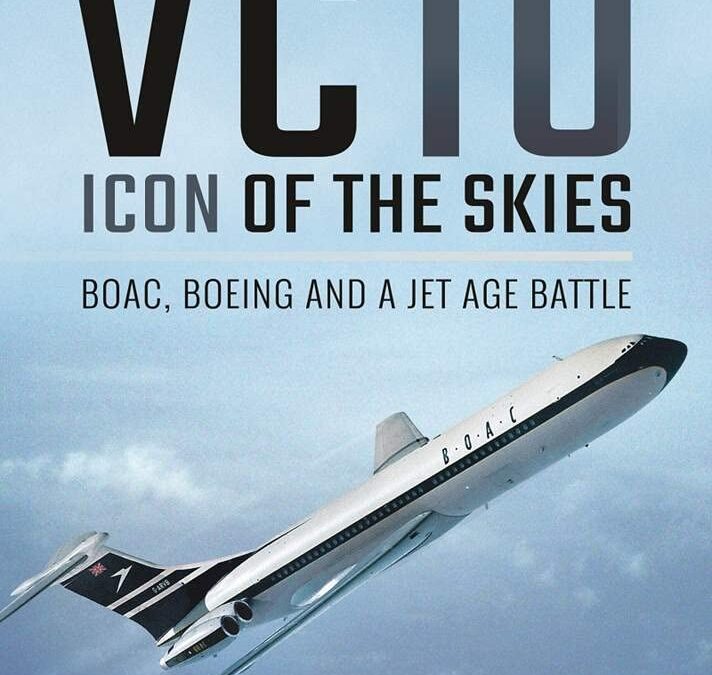
Other books have charted the VC10 in airline life, but this book blends that story with a well-researched tale of corporate and political power play. It asks; just what lay behind the sales failure of the VC1O?
Politics played an important part of course, as did BOAC’s tactics, and a ’who dunnit’ cast of politico-corporate events and machinations at the highest level of society during the dying days of Empire in 1960s Britain. Key players in the story, from Tony Benn to famous test pilot Brian Trubshaw (Concorde), are cited and quoted.
The VC10 was the nation’s biggest jet airliner of its age and regarded as the world’s best looking airliner. It was safe, fast, and designed to take off from short runways in Africa and Asia, at the request of its main operator BOAC – the airline that would later go on to become today’s British Airways.
The VC10 and the larger Super VC10 were beloved by pilots and passengers alike and became icons of the 1960s. They were hugely popular all over the world; East African Airlines made its name with Super VC10s, and so too did Freddie Laker with his famed VC10 fleet.
Yet the VC10 was eclipsed by Boeing’s 707 which sold by the hundreds, despite the fact that the 707 was less capable and could not initially operate from the runways of the Commonwealth and old British Empire routes, as the VC10 undoubtedly could.
The men of the Vickers Company who created the VC10 would later go on to engineer Concorde and, of course, the rest is history. But the era of the VC10 was pivotal and, by exploring this historical period in depth and highlighting all the various impediments that stood in the way of success for the VC10, Lance Cole adds an important layer to our understanding of twentieth century history.
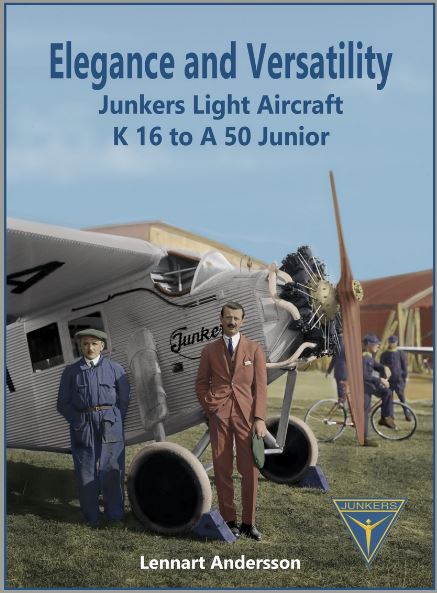
This book is about all the smaller Junkers types that were designed and built during the same period as the more well-known F 13, G 24 and W 33/W 34. The A 20 and A 35/K 53 were produced in great numbers and served in countries all over the world. The majority were of the military version, but the A 20 was also used for pioneering night airmail services.
The two-seat H 21 and the single-seat S 22 fighter were built for the Soviet Union. The K 47 two-seat fighter was sold to China and was used in dive-bombing experiments and the A 50 Junior was intended for the emerging private aircraft owner market. Junkers built substantial numbers of the Junior and they and found buyers in all corners of the world. It became world famous especially for daring long-distance flights made by illustrious aviators, including female pilots.
Contents:
Introduction
For Travellers in Style – The Junkers K 16
Two-Seaters for Private Flying and Training – The Junkers T Series
Civil and Military Use – The Junkers A 20 and Derivatives
Specially Made for the Red Air Fleet – The Junkers J 21 and J 22
Two-seat Fighter and ‘Stuka’ – The Junkers K 47
The Private Aircraft Owners Dream – The Junkers A 50 Junior
Specifications and Performance
Drawings
Sources and Bibliography
Index

The CIA’s release of its book The Central Intelligence Agency and Overhead Reconnaissance 1954–1974 is a fascinating and important historical document. It contains a significant amount of newly declassified material with respect to the U-2 and Oxcart programs, including names of pilots; code names and cryptonyms; locations, funding, and cover arrangements; electronic countermeasures equipment; cooperation with foreign governments; and overflights of the Soviet Union, Cuba, China, and other countries.
Originally published with a Secret/No Foreign Dissemination classification, this detailed study describes not only the program’s technological and bureaucratic aspects, but also its political and international context, including the difficult choices faced by President Eisenhower in authorizing overflights of the Soviet Union and the controversy surrounding the shoot down there of U-2 pilot Francis Gary Powers in 1960. The authors discuss the origins of the U-2, its top-secret testing, its specially designed high-altitude cameras and complex life-support systems, and even the possible use of poison capsules by its pilots, if captured. They call attention to the crucial importance of the U-2 in the gathering of strategic and tactical intelligence, as well as the controversies that the program unleashed. Finally, they discuss the CIA’s development of a successor to the U-2, the Oxcart, which became the world’s most technologically advanced aircraft.
For the first time, the more complete 2013 release of this historical text is available in a professionally typeset format, supplemented with higher quality photographs that will bring alive these incredible aircraft and the story of their development and use by the CIA. This edition also includes a new preface by author Gregory W. Pedlow and a foreword by U-2 expert Chris Pocock.
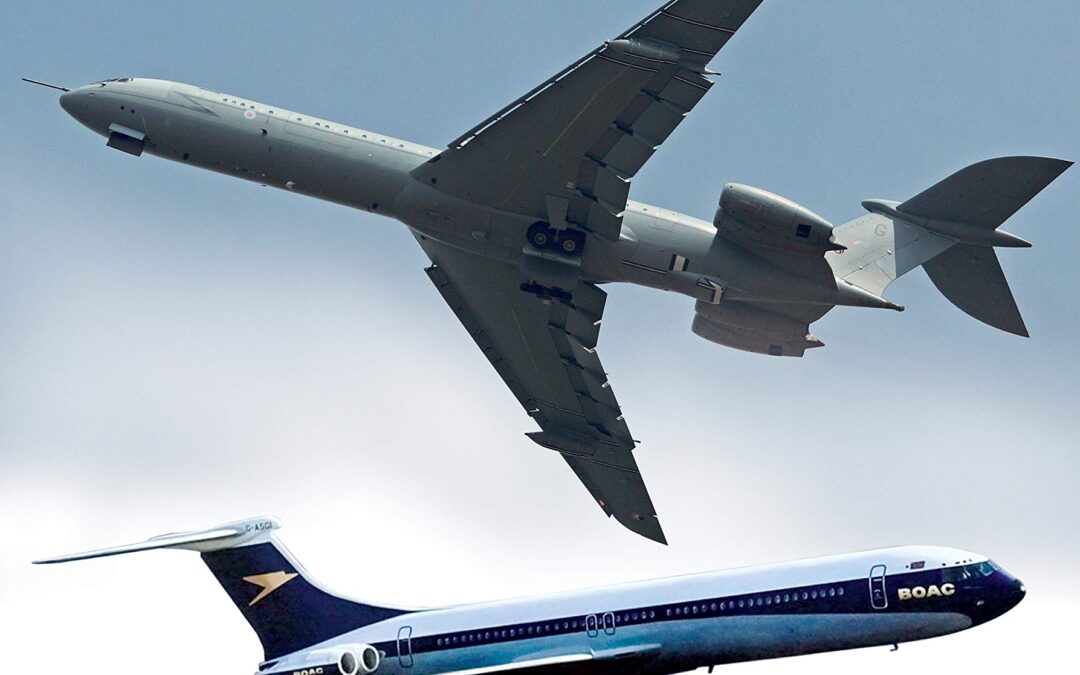
Designed and manufactured by the men who would make Concorde, the Rolls-Royce powered Vickers VC10, and its larger variant, the Super VC10, represented the ultimate in 1960s subsonic airliners. The VC10 was Britain’s answer to the Boeing 707 and the Douglas DC-8.
The VC10 was a second-generation jetliner designed in the 1960s and manufactured into the 1970s. It incorporated advanced engineering, new aerodynamics, and design features, to produce a swept, sculpted machine easily identifiable by its high T-tail design and rear-engine configuration.
The VC10 could take off in a very short distance, climb more steeply and land at slower speed than its rivals the Boeing 707 and Douglas DC-8. These were vital safety benefits in the early years of the jet age. At one stage, the Super VC10 was the biggest airliner made in Europe and the fastest in the world.
On entry into service, both the VC10 and the longer Super VC10 carved out a niche with passengers who enjoyed the speed, silence and elegance of the airliner. Pilots, meanwhile, loved its ease of flying and extra power. Yet the VC10 project was embroiled in political and corporate machinations across many years and more than one government. BOAC got what they asked for but went on to criticize the VC10 for not being a 707 – which was a different beast entirely. Questions were asked in parliament and the whole story was enmeshed in a political and corporate affair that signified the end of British big airliner production. Yet the men who made the VC10 also went on to design and build Concorde. Many VC10 pilots became Concorde pilots.
In service until the 1980s with British Airways, and until 2013 with the RAF, the VC10 became a British icon and a national hero, one only eclipsed by Concorde. It remains an enthusiast’s hero.
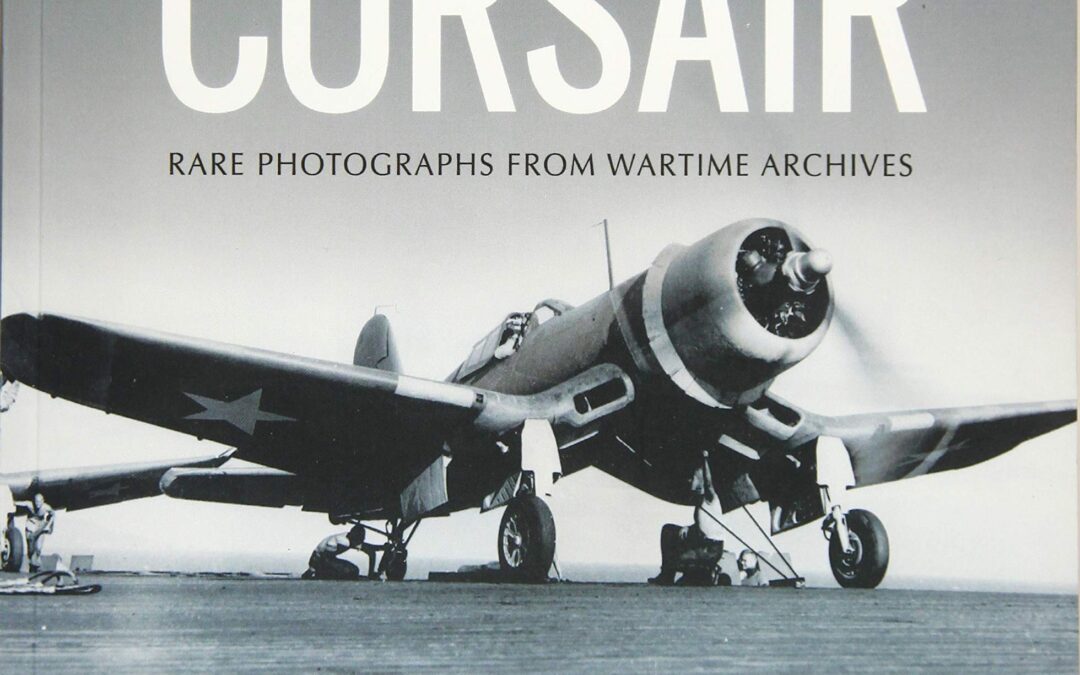
First flown in 1940, the prototype Vought F4U Corsair instantly became the fastest fighter in the world and the fastest US aircraft of any description. Powered by a huge 18-cylinder Pratt and Whitney Double Wasp engine driving an enormous 13 feet 4 inch propeller, the first Corsairs were capable of 417mph. This figure would rise to nearly 450mph in later versions.
Production began in 1941, not only by Vought but also by Goodyear and Brewster, and the F4U entered service with the US Navy in September 1942. The aircraft subsequently came to be extensively used from land and sea by the US Marines, Royal Navy and Royal New Zealand Air Force. Famous squadrons like VMF-214 ‘The Black Sheep’ and VF-17 ‘Jolly Rogers’, along with many others, maintained total ascendancy over the Japanese for the rest of the war – a remarkable achievement for a single type.
After the Second World War the Corsair remained in production and was used with distinction by the French in Indo-China and again by the US Navy in Korea. Since then Corsairs have achieved significant success in air races and more and more are being restored to fly for museums and warbird enthusiasts the world over.
This comprehensive new book combines technical information and detailed development history with a fascinating combat history told, in many cases, by the Second World War and Korean War pilots themselves. Well researched, readable and illustrated with scores of rare and previously unpublished photographs, The Vought F4U Corsair is the perfect book for any fan of the ‘bent wing bird’.

Gorgeously illustrated with NASA photography, the large-format (12 × 12 inches) NASA Missions to Mars examines everything from the first tentative steps toward the fourth planet to the 2021 landing of rover Perseverance and beyond.
Space exploration has always been about pushing boundaries, but perhaps the achievement which has most piqued a sense of possibility has been the exploration of Mars. Beginning with Soviet and American flybys in the early 1960s that were part and parcel of the Space Race, acclaimed space historian Piers Bizony continues through complete coverage of the Viking 1 and 2 missions of 1975–1976. Bizony also traces NASA’s acclaimed rover program, describing the development, technologies, mission histories, and achievements of the rovers Sojourner, Opportunity, Spirit, and Curiosity—all on the 25th anniversary of their first landing.
This awe-inspiring book features:
- An engaging and complete history of Mars exploration
- A treasure trove of imagery from the NASA archives, including photos and cartography beamed home, artworks and concept drawings created during development phases, as well as photography created to document testing phases
- A glimpse of future plans for Mars exploration and habitation
- Coverage of orbiters sent to the red planet by not only NASA but by space agencies from Russia, India, Japan, Europe, China, and the UAE
- A two-sided 24-inch gatefold
Humankind’s fascination with Mars can be traced back to prewar science fiction. While the billions of dollars and ingenious innovations have allowed us incredible views from more than 51 million miles away, no less incredible are the insights these missions, hardware, and scientists have provided into our universe—and our own planet. NASA Missions to Mars is your complete illustrated history of those efforts and a necessary volume for the bookshelf of any space enthusiast!

The Riders explores and celebrates the differences and common bonds among motorcyclists around the world via Henry von Wartenberg’s engaging and inviting documentary photography.
Motorcyclists feel a kinship with fellow riders that is not easily explained but runs deeper than choices like bike brand or riding focus. You see it sometimes with a wave of the hand from one lane to the next, with an appreciative nod at a stoplight, or in a U-turn to check on a rider stranded on the roadside.
Motorcyclists make a conscious decision to ride an inherently dangerous device, a machine open to the elements and vagaries of nature. A motorcycle demands a level of attention far greater than a car and consequences for inattention are much graver. On the flip side, riding a motorcycle offers an unmatched sense of freedom, adventure, and involvement.
Von Wartenberg, a long-time rider himself, has traveled the world on a variety of assignments, some motorcycle related and others not. But wherever he was on the planet, he always found a way to connect with fellow riders and document their culture and machines. Over the course of his travels he has photographed riders in more than 30 countries including Bolivia, Austria, Canada, Chile, China, Costa Rica, France, Mongolia, Mexico, Italy, Germany, Iceland, Peru, Spain, the United States, England, and Thailand to name a few.
What emerges on the pages of The Riders is the amazing breadth of the motorcycling world, from outlaw clubs to adventurers to racers to boulevard cruisers to those for whom a motorcycle is the only form of transportation as well a means to make a living.
The Riders is a book sure to be enjoyed by anyone who embraces the two-wheeled world.

By producing the A300—the first twin-jet, wide-body airliner in the world—the European Airbus consortium succeeded in joining the league of leading aircraft makers. The path was both rocky and exciting. Filled with detailed text, including historical, technological, and flight information, as well as colorful photos, this volume provides a fascinating insight into the history of commercial aviation. The first aircraft designed, built, and sold by Airbus, the A300 airliner debuted in 1974 with Air France and was in constant service throughout the world. Among the many past and present airlines flying the A300/310 are Air Hong Kong, Air France, Air India, American, China Airlines, Eastern, EgyptAir, FedEx, Finnair, Iberia, Korean Air, Pan Am, SAS, UPS, and many others. Though it is no longer produced, examples of the aircraft still fly today.
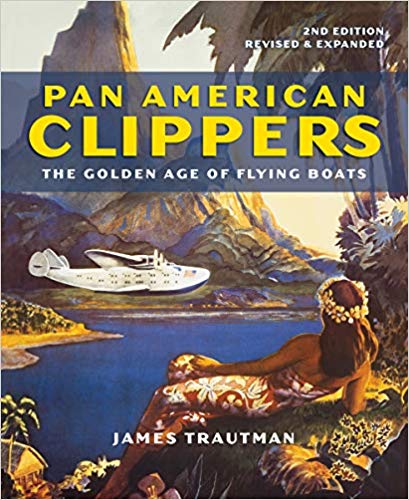
The photographs and artwork will enable readers to grasp the magnificence of the transoceanic flying boats…The accurate, authoritative text will provide information that is new to all but the exceptionally well-informed aviation buff and nonspecialist historian.”
–Choice
For a world recovering from the Great Depression, the Pan American Airways Clipper symbolized luxury, adventure and a brighter future. Illustrated with rare period photographs, vintage travel posters, magazine ads and colorful company brochures, Pan American Clippers covers all aspects of the Golden Age of Pan American’s graceful “flying boats.”
This edition has an additional 16 pages to add more historical and current information and provide additional detail and context to the historical importance of the flying boats, including:
- Pan Am’s Art Deco terminals
- the fate of the last Pan Am Clippers and where to see the survivors
- the Foynes Flying Boat Terminal, Ireland
- Trippe and Lindbergh’s groundbreaking flight to Asia by way of the Great Circle Route (Canada-Alaska-Siberia-Japan-China)
- Shediac, New Brunswick, landing site of 24 Savoia Manchetti S-55 flying boats from Rome en route to Chicago’s Century of Progress International Exposition
- Pan Am enters politics when Frank Roosevelt uses it in Latin America to sidestep the World War II Neutrality Act
- Trippe’s long-held dream of flying mail and passengers across the Atlantic Ocean to Europe, and the opening of LaGuardia Airport.
Visionary Pan Am founder Juan Trippe knew the importance of international travel to the 20th century, and his pioneering airline played a central role in the advancement of transoceanic flight, setting overseas time and distance records, providing airmail delivery and eventually as troop and cargo transports for the Allies during World War II. By dramatically reducing travel time and opening up international air travel to the general public, Pan Am Clippers forever changed the world.
This captivating, informative and richly illustrated book takes readers back to a time of glamor, romance and progress, when dreams once thought impossible were suddenly a reality.




















